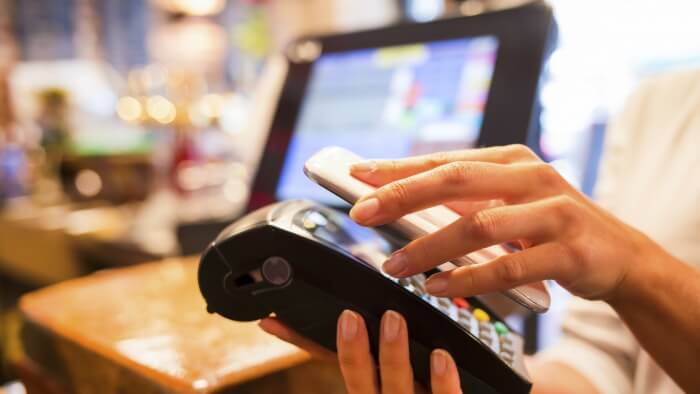Change in the retail sector has entered warp drive, accelerated by new technology and shifting customer expectations. Here's how you can keep up.
What Customers Want From Their Omni-Channel Experience
Change in the retail sector has entered warp drive, accelerated by new technology and shifting customer expectations. Here's how you can keep up.

The days of the all-powerful retailer are well and truly over. No longer can retail brands determine when we shop, where we shop or how we shop. To a large extent, even how much we pay digital technology, which allows us to choose exact delivery slots, surf the aisles in the middle of the night and check comparison sites for the best prices.
Technology has created a much more ferociously competitive buying battleground where retailers are not just competing with the store down the road, but also every store online, whether it is a big brand, a small niche outfit or a digital pure play.
Today, the most successful retailers are not omnipotent; they are omni-channel. The power has shifted to the consumer, who is now firmly ensconced in the driving seat, with an insatiable appetite for retail to be faster, cheaper and better.
"Retailers need to aggressively restructure their business if the current model doesn’t work"
In 2015, the idea of a customer taking a day off work to sit at home waiting for a delivery (which may not even come) seems quaint, risible and consigned already to the history books about how we used to live before the internet took hold.
The two main drivers forcing this revolution are the change in consumer behaviour and the speed at which technology is developing. The coupling of these two trends means one thing: much higher consumer expectations, regardless of which retail sector you are operating in.
What are consumers expecting from retailers?
Convenience
Most importantly, they want to receive their goods in a way that suits their lifestyle without incurring unreasonable premiums, or wasting precious time. Many retailers have been testing their way into providing more seamless omni-channel experiences and driving real business results.
For example, in the UK, John Lewis realized that consumers wanted to buy online and pickup in store (click-and-collect)— that service now accounts for 45 percent of online orders.
Excellent Customer Service
This new competition for the consumer has led to significant improvements in the retail customer experience. Brands like Nutmeg, Uber and Airbnb are providing radically simplified service models.
Consumers’ service expectations are no longer limited to a product category or vertical industry which compounds the challenge for retailers. These pioneers have met the service challenge and raised the bar dramatically for their retail peers, with consumers now expecting excellence as standard.
Social Proof of Purchase
Peer recommendation is a key part of the modern buying process, especially for millennials. Some brands are responding to this trend, such as Nordstrom, a leader in the in the US for omnichannel retailing, which now tags items that are popular on Pinterest.
Consumers value the insight and experience of their peers, and this is a great example of how digital data can influence in-store sales.
Personalised Experiences
Some retailers are already providing these to great effect, such as Tori Burch, which has developed a store associate-facing tablet application, Client Book, which puts the power of information at the associate’s fingertips.
The sales associate can see a robust profile of the individual consumer and provide a custom shopping experience.
Relevant Content to Inform their Purchase
REI, the outdoors equipment retailer, for instance, excels at blending content and commerce. The business understands the lifestyle of its consumer - it publishes regular content, and hosts in-store events to bring people together.
Sephora is also a winner on this front: it seamlessly blends content, such as how-to videos and inspirational beauty boards, with efficient commerce. It understands how mobile experiences can augment the in-store experience – in fact, it encourages mobile use in store.
Retailers need to aggressively restructure their business if the current model doesn’t work. Consumers expect to interact with brands seamlessly across channels and devices and have a consistent experience. They are not interested in the challenges of integrating different communications channels or IT systems.
They are looking for a level of connectedness that retailers are often struggling to provide. Some retailers have realized that this means they need to constantly reinvent their business and put completely new processes in place.
While online retail pure players, from Amazon to Netflix to Uber, are getting a lot of attention right now, we believe that the most profound innovations in the near-term will actually come from brick-and-mortar retailers— especially because over 90% of retail sales still happen in physical stores.
There are already signs of this happening. For example, Best Buy, which is leveraging its store network to deliver products to customers faster than Amazon does. In the process, too, Best Buy has improved margin on clearance and end-of-life inventory that has been historically trapped in stores.
To win this omni-channel game, retailers need to address internal challenges head on. That means changing their organizational structures and incentive models to drive collaboration and innovation around digital; putting the customer experience at the centre and re-configuring their infrastructure and data models around that—in particular connecting digital to in-store.
But, when speaking with traditional retailers, they often cite their thin profit margins, an inability to attract digital talent and a hesitancy of moving first as the main reasons why they are holding back in digital, and therefore not being able to provide seamless multi-channel experiences.
However, if these ex-power players don’t ramp up their pace and start adapting their tactics to this new, more level playing field, they will soon find themselves sitting on the side-lines for good and will never have the chance to restore their former glory.
Thanks for signing up to Minutehack alerts.
Brilliant editorials heading your way soon.
Okay, Thanks!


